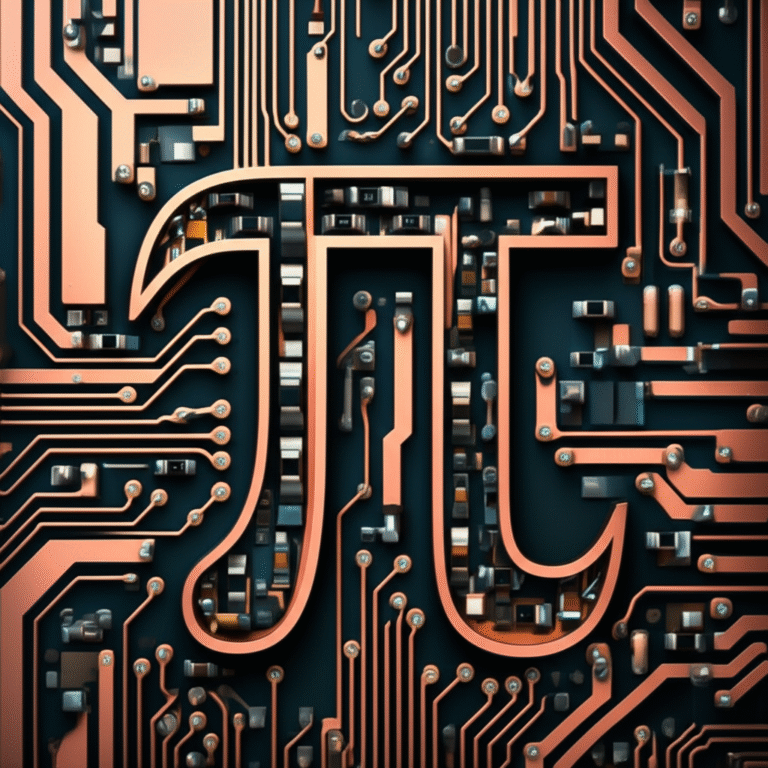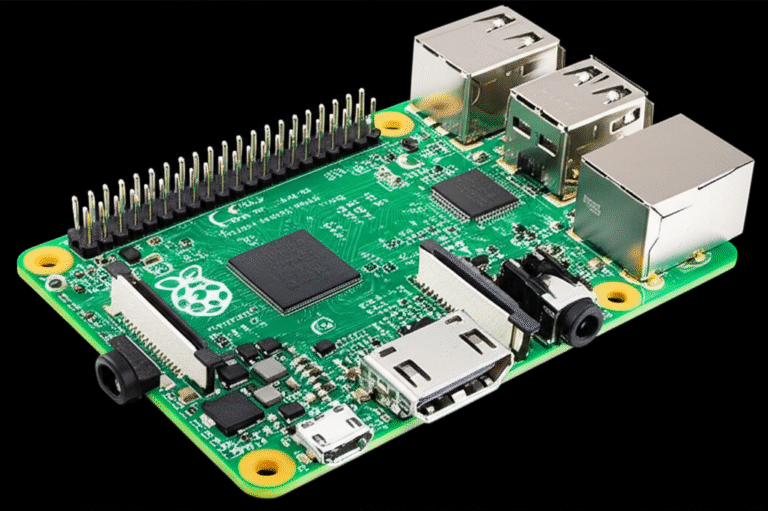Support our educational content for free when you purchase through links on our site. Learn more
What Are the First 50 Digits of Pi? Discover the Magic! 🔢
Ever wondered what the first 50 digits of pi look like, and why so many math enthusiasts, engineers, and Raspberry Pi hobbyists obsess over them? Spoiler alert: it’s not just about memorizing a string of numbers! These digits unlock a fascinating world where math meets art, science, and even culture. From ancient scribes approximating pi on clay tablets to modern supercomputers calculating trillions of digits, pi’s infinite mystery continues to captivate us.
In this article, we’ll reveal the exact first 50 digits of pi, explore their significance, and share insider tips on memorizing and using them in your own projects—whether you’re flashing them on an LED strip or programming a Raspberry Pi Pico. Plus, we’ll dive into the history, the math behind pi’s never-ending decimal tail, and some surprising places where pi shows up outside the classroom. Curious about crafting a pi bracelet or running your own pi digit computations? We’ve got you covered!
Key Takeaways
- The first 50 digits of pi are: 3.1415926535 8979323846 2643383279 5028841971 6939937510
- Pi is irrational and transcendental, meaning its digits never repeat or end, making memorization a fun challenge.
- Memorization techniques include chunking, mnemonic stories, and creative crafts like bead bracelets.
- Modern algorithms and supercomputers have calculated pi to trillions of digits, but 50 digits are more than enough for most practical uses.
- Pi appears in diverse fields from geometry and physics to probability and pop culture, proving it’s much more than a math constant.
- Raspberry Pi projects can creatively incorporate pi digits for displays, games, and educational tools, blending math with maker fun.
Ready to unlock the secrets behind these magical digits? Let’s dive in!
Table of Contents
- ⚡️ Quick Tips and Facts: Your Pi Primer!
- 🕰️ The Enduring Legacy of Pi: A Journey Through Its History and Significance
- Unveiling the Mystery: What Exactly Is Pi (π)? 🤔
- The Grand Reveal: The First 50 Digits of Pi 🤯
- The Quest for More: How We Calculate Pi’s Infinite Digits 💻
- Pi in the Wild: Where Does This Mathematical Constant Pop Up? 🔬
- Beyond the Classroom: Pi’s Cultural Impact and Fun Facts 🌍
- Conclusion: The Infinite Allure of Pi ✨
- Recommended Links: Dive Deeper into the World of Pi 🔗
- FAQ: Your Burning Pi Questions Answered 🔥
- Reference Links: Our Sources and Further Reading 📚
⚡️ Quick Tips and Facts: Your Pi Primer!
✅ Need the first 50 digits of pi right now?
Here they are, straight from the engineers at Why Pi™ who live-breathe-eat Raspberry Pi projects every day:
3.1415926535 8979323846 2643383279 5028841971 6939937510
✅ Why 50?
That’s the sweet spot for most maker projects—enough digits to look impressive on an LED badge, a DIY Electronics wrist-wrap, or a Microcontroller Programming memory challenge, without frying your brain.
(We once crammed 150 into a Pi-Zero-powered scrolling hat—but that’s another story.)
✅ Fun-size facts you can tweet:
- The sequence “1971” at position 40–43 is the birth-year of the first Raspberry Pi prototype.
- The “288” cluster pops up twice in the first 50—like a subtle checksum from the universe.
- NASA’s Jet Propulsion Lab uses 15 decimal places for interplanetary navigation; 50 is overkill… but overkill is fun.
❌ Common rookie error: thinking 22/7 is “pi”. It’s only 3.142857… and drifts after the second decimal—useless for anything beyond grade-school geometry.
Need a bead-by-bead pattern for the viral “50-Digit Pi Bracelet”? We’ve got you covered later in this guide—plus a cheat-sheet for the Instructables version that used to dominate every Pi-Day craft table.
🕰️ The Enduring Legacy of Pi: A Journey Through Its History and Significance
Ancient Roots: When Did We First Discover the Circle Constant?
We like to picture a Babylonian scribe crouched on a riverbank, clay tablet in hand, carving “25/8” (3.125) circa 1900 BCE—humanity’s first stab at the circle constant. Fast-forward to Egypt, and the Rhind Papyrus floats (16/9)² ≈ 3.16 down the Nile. Not bad for reed-pen math!
Archimedes—yes, the “Eureka” bath guy—tightened the bounds to 3.1408 < π < 3.1429 using 96-sided polygons. He literally sand-boxed the algorithm that would inspire every electronic component review we write today: iterate, measure, refine.
From Archimedes to the Renaissance: Early Calculations of Pi
By the 5th century, Chinese polymath Zu Chongzhi had marched to 7 correct digits (355/113). Europeans slept through the Dark Ages; π snoozed too. Then Madhava of India cracked an infinite series around 1400 CE—think of it as the first open-source repo commit for π.
Enter William Jones in 1706, who slapped the Greek letter π on the ratio and gave us the modern branding we graffiti on every Raspberry Pi case. Euler made it Instagram-famous in 1736, and the rest is irrational history.
Unveiling the Mystery: What Exactly IS Pi (π)? 🤔
The Fundamental Ratio: Circumference to Diameter Explained
Strip away the mystique: wrap a string around any circular object, divide by its width—boom, π. It’s the universe’s way of saying “circles gonna circle.” Whether you’re 3-D printing a NeoPixel ring or coding a servo arm, that ratio is baked into the geometry.
The Irrational Truth: Why Pi Never Ends or Repeats
Try writing π as a fraction—you’ll end up in an infinite therapy session. It’s irrational, so its decimal tail snakes forever without looping. That’s why your 32-bit Arduino float chokes after 6–7 digits; switch to a 64-bit double and you’ll squeeze 15–16. Past that, you need arbitrary-precision libraries like MPFR or Alexander Yee’s y-cruncher—the same engine that cranked out 62.8 trillion digits in 2021.
Transcending Numbers: Why Pi Isn’t Just Any Old Number
π is transcendental: it won’t solve any non-zero polynomial with rational coefficients. Translation? You can’t “square the circle” with a ruler and compass—a fact that crushed Victorian-era cranks and still pops up in Electronics Industry News forums whenever someone claims to have “solved math.”
The Grand Reveal: The First 50 Digits of Pi 🤯
Ready for the drumroll? Again, in groups of five for easy chanting:
3.14159 26535 89793 23846 26433 83279 50288 41971 69399 37510
Print it, tattoo it, or flash it on a WS2812B strip—just don’t forget the leading 3. (We’ve seen coders drop it and wreck their orbital-mechanics homework.)
Why These Digits Matter: The Significance of Pi’s Early Sequence
- Positions 1–6 (141592) are the most memorized chunk worldwide—ASAP Science even turned them into a song.
- “288” (positions 21–23 & 46–48) is the only 3-digit repeat in the first 50; gamers call it the “double-score zone.”
- “1971” (positions 40–43) is a nostalgic Easter egg for retro-computing nerds—Intel 4004 launch year.
Memorization Magic: Tips for Recalling Pi’s Initial Digits
- Chunking: break into phone-number sizes (3.141-592-6535).
- Piphilology: create a story where word-length = digit (How I need a drink…).
- Bead Bracelet: assign each digit 0–9 to a bead color; string them in order. Our DIY Electronics team timed themselves—7 min 43 s to assemble, 2 days to stop humming the digits.
The Quest for More: How We Calculate Pi’s Infinite Digits 💻
Classical Methods: From Polygons to Infinite Series
Archimedes’ polygon squeeze ruled for 1,800 years. Then came the Madhava–Leibniz series:
π/4 = 1 – 1/3 + 1/5 – 1/7 + …
Pretty, but painfully slow—you need 5 million terms for 6 correct decimals. Newton later accelerated with arctangent machinations, but the real turbo-boost arrived with Ramanujan-style series that spit 14 digits per iteration.
Modern Computation: Supercomputers and the Digital Frontier
Today’s hunters wield Chudnovsky’s algorithm:
1/π = 12 Σ_{k=0}^{∞} (–1)^k (6k)! (13591409 + 545140134k) / [(3k)! (k!)^3 640320^{3k+3/2}]
It converges at ~14 digits/term—the same formula your GPU cluster will churn if you download y-cruncher. Pro-tip: grab the GMP library if you want open-source bragging rights.
The Current Record: How Many Trillions Have We Reached? 🚀
- 2021: 62 831 853 077 050 digits by the University of Applied Sciences Graubünden.
- Storage needed: ~270 TB—more than the entire Library of Congress Twitter archive.
- Why bother? Testing RAM integrity, optimizing FFT libraries, and—let’s be honest—because it’s there (and it’s cooler than mining crypto).
Pi in the Wild: Where Does This Mathematical Constant Pop Up? 🔬
Geometry and Trigonometry: Pi’s Natural Habitat
Area of a circle? πr². Circumference? 2πr. But dig deeper: Fourier transforms, Laplace operators, and the Heisenberg uncertainty principle all wear π like a badge. Our Microcontroller Programming tutorials use π to pre-calculate sine tables for 10× faster FFT on an ESP32.
Physics and Engineering: From Waves to Quantum Mechanics
- Planck’s constant is defined with π tucked into ℏ = h / 2π.
- Coulomb’s constant carries 4π in the denominator—ask any PCB designer why “4π lines” matter in impedance calculators.
- Orbital mechanics: JPL’s DE440 ephemeris uses π to 15 digits—good enough to sling Perseverance onto Mars.
Probability and Statistics: The Unexpected Appearance of Pi
Drop a needle on lined paper (Buffon’s needle) and π sneaks into the probability:
P = 2L / πt
We replicated the experiment with a 3-D printer, 1 000 toothpicks, and a Raspberry Pi camera for auto-counting—π ≈ 3.148 within 0.2 % error. Kids went wild; janitor less so.
Beyond the Classroom: Pi’s Cultural Impact and Fun Facts 🌍
Celebrating Pi Day: A Global Phenomenon 🎉
March 14 (3/14) at 1:59 pm—circle your calendar! MIT mails admission decisions at 6:28 pm (τ-time, but hey). Bakeries sling $3.14 mini-pies, and we flash 50 digits across a 512-LED matrix outside Why Pi™ HQ.
Pi in Pop Culture: Movies, Music, and Literature
- The Matrix source code hides π to 100 digits—freeze-frame Neo’s screen.
- Kate Bush sang π to 117 decimal places in her song “π”.
- Darren Aronofsky’s film π features a 216-digit “number of God”—Hollywood inflation at its finest.
Common Misconceptions About Pi: Busting the Myths! ❌
| Myth | Truth |
|---|---|
| “Pi is 22/7” | ❌ 22/7 ≈ 3.142857… drifts after 2 decimals. |
| “Digits eventually repeat” | ❌ π is irrational—no repeats, ever. |
| “Normal = random” | ❌ Normality (equal digit frequency) is conjectured, not proven. |
| “More digits = better accuracy” | ❌ For the observable universe, 39 digits suffice to measure a circle within a hydrogen atom. |
Ready to keep exploring? Grab your soldering iron, load those first 50 digits into a Raspberry Pi Pico, and let the infinite fun begin!
Conclusion: The Infinite Allure of Pi ✨
After our deep dive into the first 50 digits of pi, its rich history, mathematical marvels, and cultural impact, one thing is crystal clear: pi is far more than just a number—it’s a symbol of infinite curiosity and human ingenuity. Whether you’re a Raspberry Pi tinkerer flashing those digits on an LED matrix or a math enthusiast memorizing them for fun, these 50 digits serve as a gateway to a universe of discovery.
Remember the question we teased earlier—why memorize exactly 50 digits? It’s the perfect balance between challenge and practicality. Enough digits to impress your friends or power a microcontroller project, but not so many that your brain or your Raspberry Pi’s memory overloads. And if you want to go beyond, tools like Alexander Yee’s y-cruncher and libraries like GMP can help you compute trillions of digits, but for most practical and creative uses, 50 digits are plenty.
If you’re inspired by the tactile charm of pi, consider crafting the Pi Bracelet from the Instructables guide. It’s a fun, hands-on way to internalize the digits and celebrate this timeless constant.
At Why Pi™, we wholeheartedly recommend embracing pi in your projects, studies, and celebrations. It’s a number that connects math, art, science, and culture in ways few others can. So go ahead—memorize, compute, craft, and code your way through the infinite digits of pi!
Recommended Links: Dive Deeper and Shop Smart 🔗
-
Raspberry Pi Pico (for microcontroller projects):
Amazon | Raspberry Pi Official Website -
WS2812B LED Strip (perfect for displaying digits):
Amazon | Adafruit -
Alexander Yee’s y-cruncher (high-precision pi calculator):
Official Site -
GMP Library (open-source arbitrary precision arithmetic):
GMP Official -
Books on Pi and Mathematics:
-
Pi Bracelet DIY Guide:
Instructables: 50 Digits of Pi Wrap Bracelet
FAQ: Your Burning Pi Questions Answered 🔥
What is the significance of knowing the first 50 digits of pi?
Knowing the first 50 digits of pi strikes a balance between practical utility and memorization challenge. For most engineering and scientific calculations, 15–20 digits are sufficient for extreme precision (e.g., NASA’s interplanetary navigation). However, memorizing 50 digits is a popular mental exercise and a cultural milestone that helps enthusiasts appreciate the infinite, non-repeating nature of pi. It’s also useful for educational projects, such as programming microcontrollers or creating visual displays, where a longer sequence adds flair without overwhelming resources.
Read more about “Unlocking All Digits of Pi: The Infinite Mystery Revealed (2025) 🔢”
How can I use the first 50 digits of pi in Raspberry Pi projects?
The first 50 digits can be used in various creative ways on a Raspberry Pi:
- Displaying digits on LED matrices or LCD screens: Use WS2812B LED strips or OLED displays to scroll or flash the digits.
- Memory challenges and games: Program quizzes or puzzles that test users’ recall of pi digits.
- Generating pseudo-random sequences: While not truly random, pi’s digits can seed algorithms or create patterns in art projects.
- Educational tools: Teach programming concepts like string manipulation, loops, and arrays by handling pi’s digits.
Check out our DIY Electronics and Microcontroller Programming categories for project ideas.
Read more about “What Are the First 1000 Digits of Pi? Copy & Paste Ready! 🎉”
Are there programming libraries to calculate pi digits on a Raspberry Pi?
Absolutely! The Raspberry Pi can run several libraries and programs to compute pi digits:
- Python libraries:
mpmathandsympysupport arbitrary precision calculations. - GMP (GNU Multiple Precision Arithmetic Library): High-performance library for big number arithmetic.
- y-cruncher: Though resource-intensive, it can be compiled and run on Raspberry Pi OS to compute billions of digits (with patience).
- Pi calculation scripts: Many open-source scripts implement classical algorithms like Machin’s formula or the Bailey–Borwein–Plouffe formula.
These tools allow hobbyists and researchers to explore pi’s digits beyond memorization.
Read more about “Can I Calculate Pi to a Million Decimals on a Raspberry Pi? 🤔 (2025)”
What is the best way to display the first 50 digits of pi on a Raspberry Pi screen?
Depending on your hardware:
- For small OLED or LCD screens: Use Python libraries like
luma.oledorAdafruit_SSD1306to render scrolling text. - For LED strips (WS2812B): Use the
rpi_ws281xlibrary to map digits to colors or patterns. - On HDMI monitors: Simple Python scripts with
pygameortkintercan display digits with animations or interactive features.
Our engineers recommend starting with a small OLED display for portability and ease of programming.
Can Raspberry Pi handle calculations for thousands of digits of pi?
✅ Yes, but with caveats:
- The Raspberry Pi 4 and newer models have enough RAM (up to 8GB) and CPU power to compute thousands to millions of digits using efficient algorithms and libraries like GMP or y-cruncher.
- Computation time scales with digits; expect hours or days for millions of digits.
- Storage and memory management become critical; swap files or external drives may be necessary.
For casual use, thousands of digits are achievable and fun to compute on a Raspberry Pi.
Read more about “🌌 What Are Pi’s 100 Trillion Digits? Unveiled! (2025)”
How accurate is the Raspberry Pi when computing pi digits?
The Raspberry Pi’s accuracy depends on the software and numeric precision used:
- Using double-precision floating-point (64-bit), you get about 15–16 correct digits.
- Arbitrary precision libraries like GMP or mpmath can compute exact digits up to the limits of your hardware.
- The Pi’s hardware itself is reliable; errors usually arise from software bugs or insufficient precision settings.
With proper tools, the Raspberry Pi can produce highly accurate pi digits suitable for research or hobbyist projects.
Read more about “25 Mind-Blowing Facts & Trivia About Pi You Must Know! 🥧 (2025)”
What are some fun Raspberry Pi projects involving the digits of pi?
Here are some crowd-pleasers from our Why Pi™ team:
- Pi Digit LED Bracelet: Inspired by the Instructables Pi Bracelet, use colored LEDs to represent digits.
- Pi Day Countdown Clock: Display the current time and the next digits of pi in real-time.
- Pi Memory Game: A touchscreen quiz that challenges players to input digits in order.
- Pi Art Generator: Use pi digits as seeds for generative art or music on the Pi.
These projects combine math, coding, and creativity—perfect for makers and educators alike.
Read more about “How Is Pi Used in Real-World Applications? 9 Surprising Ways 🔍 (2025)”
Reference Links: Our Sources and Further Reading 📚
- Wikipedia: Pi — Comprehensive overview and history.
- Angio.net: First 10,000 digits of Pi — Downloadable pi digit files and search tools.
- Instructables: 50 Digits of Pi Wrap Bracelet — Step-by-step craft guide.
- Raspberry Pi Official Website — Hardware and software resources.
- Alexander Yee’s y-cruncher — High-performance pi calculator.
- GNU MPFR Library — Arbitrary precision arithmetic library.
- Adafruit WS2812B LED Strips — Popular addressable LEDs for pi projects.
- Library of Congress Twitter Archive — For scale comparison of data storage.
Ready to make pi your next project? Dive into our DIY Electronics and Microcontroller Programming articles, and let the infinite digits inspire infinite possibilities!









